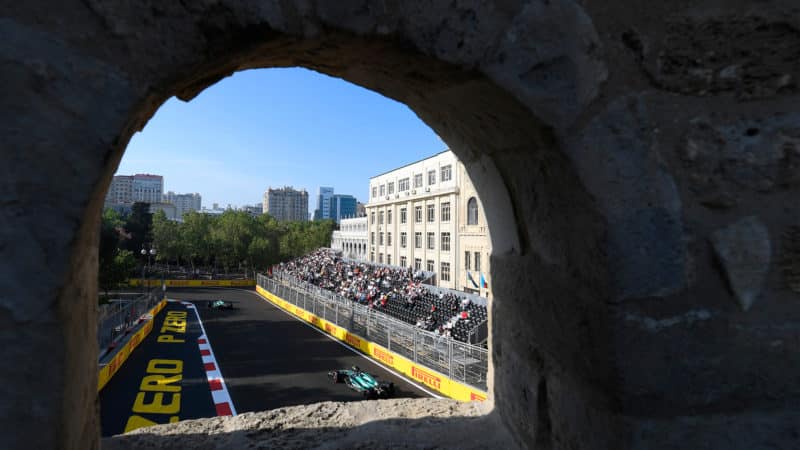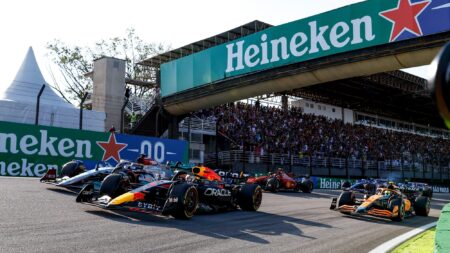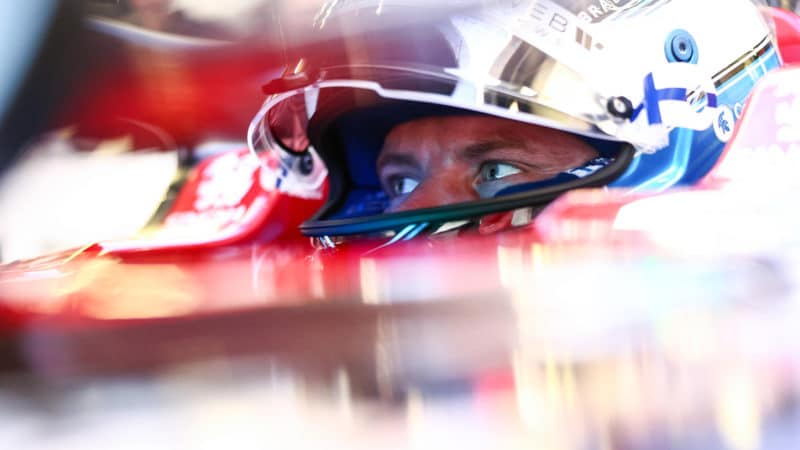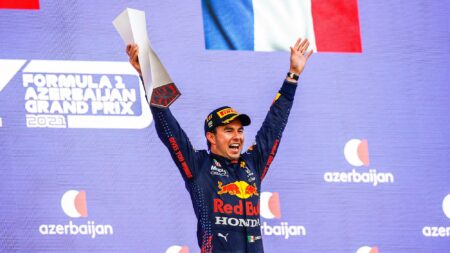Another potential crossover is when a driver damages his only example of a new front wing in the sprint and has to go back to an earlier specification for Sunday. He could be obliged to start from the pitlane due to a change of spec.
There’s a little more leeway built into sprint weekends to allow the use of previously-raced parts without penalty, but that’s at the discretion of the FIA. If the older wing is lighter, for example, you would still have to do the pitlane start.
In addition an accident in the sprint that requires the introduction of a new replacement gearbox or power unit could trigger a grid penalty for the main race, although that will only be an issue later in the year.
All of the above are reasons to give drivers food for thought about taking too many risks or trying a last lap lunge, without even thinking about the cost cap consequences of significant damage.
Will drivers park the car when they’re out the points?
The other big issue is what about drivers who are well out of the points? In other words if you are running 15th halfway through the sprint, what is the motivation to carry on, never mind trying a risky passing move that might make good TV but gain you nothing?
It’s true that on Baku’s streets you never know what might happen ahead and pushing on to the flag could reap rewards. But when we get to the upcoming sprints at normal circuits where there is low attrition and 15th is likely to stay 15th you could speculate that drivers might not been taking too many risks.
After all every lap they do puts precious miles on engines and gearboxes, and these days drivers are well aware that in the context of the cost cap a massive crash this weekend could mean that their team runs out of cash and can’t afford an all-important upgrade a few months down the line.

Don’t expect a spate of backmarkers retiring form the race, say drivers
Aziz Karimov/Getty Images
On the other hand, even if you are not in the points, the sprint is in effect a 17-lap test session ahead of the grand prix itself.
Even after a first lap stop to replace a damaged wing there could be knowledge to be gained. Pirelli expects everyone to use medium tyres for the sprint – so if a pitstop puts you out of contention you could for example switch to softs to gain useful long run info for Sunday.
“I think it’s a balance,” says Sergio Perez. “None of us want to make any damage to our cars, because that can be very penalising on bringing future upgrades and it can have an impact on your future races.






